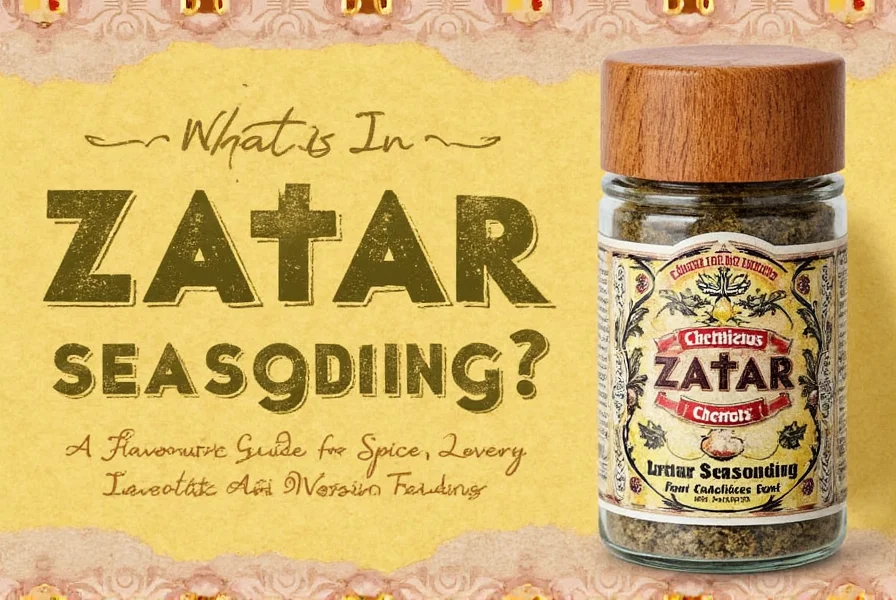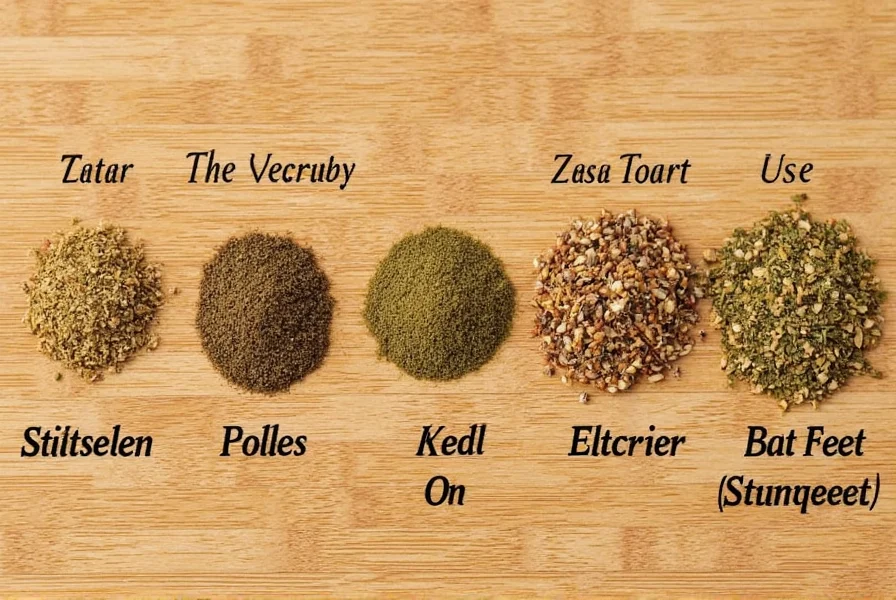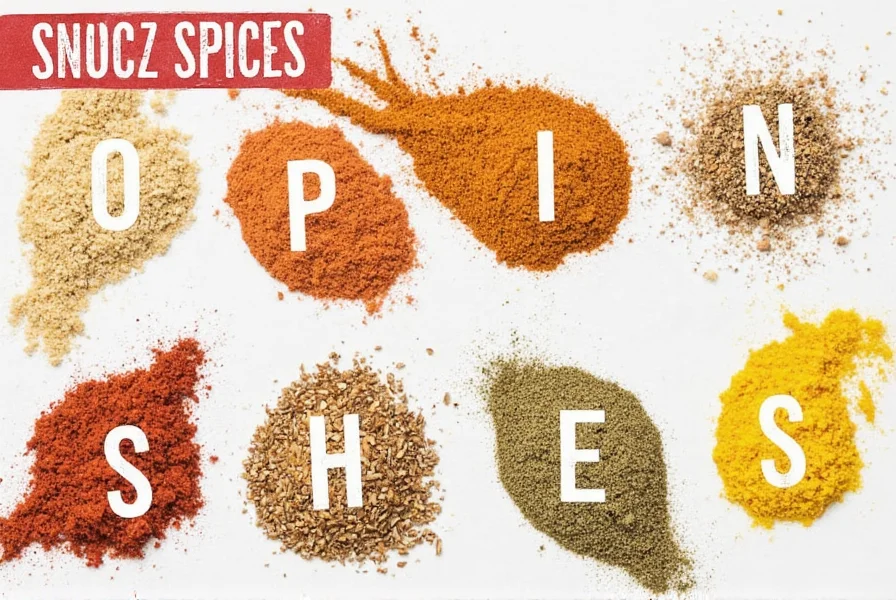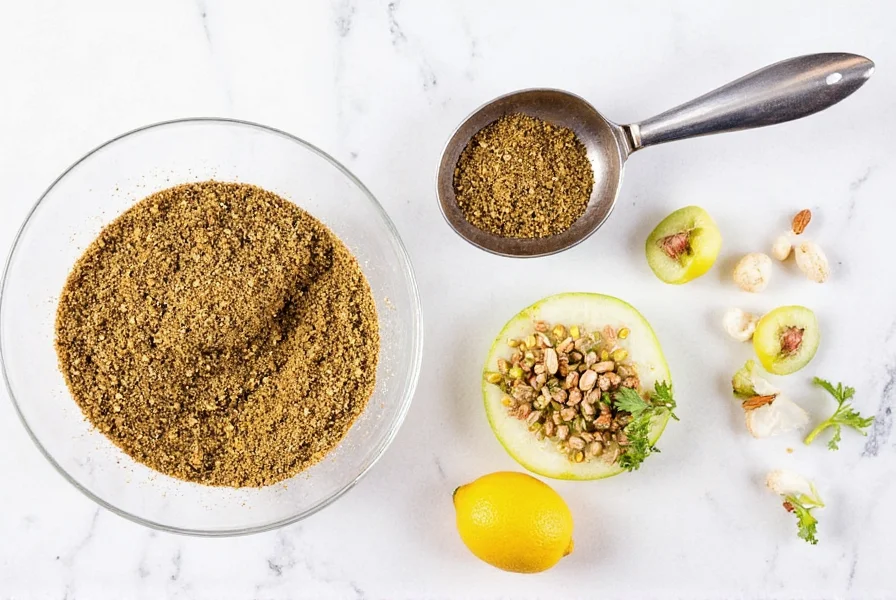Table of Contents
Introduction to Zatar Seasoning
Zatar seasoning, also known as za'atar, is a popular Middle Eastern spice blend that brings a unique and aromatic flavor to dishes. It's often used as a topping for flatbreads, mixed into dips, or sprinkled over meats and vegetables. But what exactly is in zatar seasoning? If you're curious about its ingredients and how it can elevate your cooking, you've come to the right place.

This guide will take you through the essential components of zatar seasoning, how to use it, and how to choose the best version for your kitchen. Whether you're a seasoned cook or just starting out with spices, this article has something for you.
The Key Components of Zatar Seasoning
At its core, zatar seasoning is a simple yet complex mix of herbs, spices, and sometimes nuts. The exact composition can vary depending on the region and personal preference, but there are a few common ingredients you'll find in most blends. Let's break them down:
1. Thyme (Thymus vulgaris)
Thyme is one of the main herbs in zatar seasoning. It adds a slightly earthy, lemony, and minty flavor that gives the blend its signature aroma. Some recipes use wild thyme, which has a stronger scent than cultivated varieties.

2. Sumac (Rhus coriaria)
Sumac is a tangy, lemon-like spice that's commonly used in Middle Eastern cuisine. It adds a bright, acidic note to zatar seasoning, balancing the richness of other ingredients. Its deep red color also makes it visually appealing when sprinkled on food.
3. Sesame Seeds
Sesame seeds add a nutty, slightly oily texture to the blend. They help bind the mixture together and provide a subtle crunch. Some versions use toasted sesame seeds for a more intense flavor.

4. Salt
Most zatar seasonings include a small amount of salt to enhance the overall flavor. The quantity varies, so it's always a good idea to taste before adding more.
5. Optional Ingredients
Some variations of zatar seasoning may include additional elements such as:
- Olive oil: Used to create a paste-like consistency for spreading on breads or dips.
- Cumin: Adds warmth and depth to the blend.
- Paprika: Offers a smoky or sweet undertone.
- Black pepper: Enhances the overall complexity of the seasoning.
These extra ingredients can vary by recipe, so feel free to experiment based on your taste preferences.
How to Use Zatar Seasoning in Your Cooking
Zatar seasoning is incredibly versatile. Here are some creative ways to incorporate it into your meals:
1. As a Topping for Flatbreads
One of the most popular uses for zatar seasoning is as a topping for pita, lavash, or manakish. Simply sprinkle it on top of warm flatbreads and drizzle with olive oil for a quick and flavorful snack.
2. Mixed into Dips and Spreads
Add a teaspoon of zatar seasoning to hummus, baba ghanoush, or labneh for an extra kick of flavor. It pairs particularly well with creamy textures.
3. Sprinkled Over Meats and Vegetables
Use zatar seasoning to season grilled chicken, lamb, or roasted vegetables. Its bold flavor complements both meat and plant-based dishes.
4. Used in Salad Dressings
Mix a small amount of zatar seasoning with olive oil and lemon juice to create a zesty salad dressing. It works especially well with leafy greens and Mediterranean salads.
5. Made into a Paste
For a more concentrated flavor, combine zatar seasoning with olive oil and a bit of water to make a paste. This is great for spreading on breads or using as a dip.
Buying Guide: How to Choose the Best Zatar Seasoning
If you're looking to buy zatar seasoning, there are several factors to consider. Here's a detailed guide to help you make the best choice:
1. What to Look for When Buying Zatar Seasoning
When purchasing zatar seasoning, look for the following qualities:
- Freshness: Fresh zatar seasoning has a strong aroma and vibrant color. Avoid products that smell stale or have a dull appearance.
- Ingredients: Check the label to ensure the blend contains natural ingredients like thyme, sumac, and sesame seeds. Avoid products with artificial additives or fillers.
- Origin: Zatar seasoning from the Middle East, especially Lebanon or Syria, tends to be more authentic and flavorful. However, high-quality versions are available worldwide.
- Texture: A good zatar seasoning should have a coarse, crumbly texture rather than being too powdery or clumpy.

2. Recommended Products
Here are some top-rated zatar seasonings that you might want to try:
Product 1: Za'atar by Amara Foods
Features: Contains thyme, sumac, sesame seeds, and sea salt. Free from artificial preservatives.
Advantages: Vibrant flavor, easy to use, and great for beginners.
Use Cases: Ideal for spreading on bread, mixing into dips, or seasoning meats.
Target Audience: Home cooks who enjoy Middle Eastern cuisine.
Suitable Occasions: Everyday meals, casual gatherings, and holiday feasts.
Product 2: Za'atar by Zaytoun
Features: Includes thyme, sumac, sesame seeds, and a touch of cumin. Organic and fair trade certified.
Advantages: Ethically sourced, rich in flavor, and perfect for health-conscious consumers.
Use Cases: Great for homemade dips, dressings, and as a finishing spice.
Target Audience: Eco-friendly shoppers and those who value sustainable products.
Suitable Occasions: Family dinners, potlucks, and special events.
Product 3: Za'atar by Harissa Market
Features: Made with wild thyme, sumac, sesame seeds, and sea salt. No added sugar or preservatives.
Advantages: Authentic taste, high quality, and suitable for those who prefer minimal processing.
Use Cases: Perfect for traditional Middle Eastern dishes and as a condiment.
Target Audience: Food enthusiasts and those who appreciate traditional recipes.
Suitable Occasions: Dinner parties, cultural celebrations, and everyday meals.
| Characteristic | High-Quality Zatar | Low-Quality Zatar |
|---|---|---|
| Primary Ingredients | Authentic thyme, sumac, and sesame seeds in proper ratios | Imbalanced ratios or missing key ingredients |
| Freshness | Vibrant color, strong aroma, no rancidity | Dull appearance, stale smell, possible rancidity |
| Texture | Coarse, crumbly consistency | Powdery or overly clumpy |
| Added Ingredients | Minimal natural additives | Artificial preservatives, fillers, or excessive salt |
| Origin | Authentic Middle Eastern sources | Unclear or questionable sourcing |
Frequently Asked Questions About Zatar Seasoning
What are the three essential ingredients in authentic zatar seasoning?
The three must-know ingredients that form the foundation of authentic zatar seasoning are thyme, sumac, and sesame seeds. While regional variations exist, these three components create the distinctive flavor profile that defines true zatar. Thyme provides earthy, lemony notes; sumac adds tangy, citrus-like acidity; and sesame seeds contribute nuttiness and texture.
Is za'atar the same as zatar seasoning?
Yes, "za'atar" and "zatar" refer to the same spice blend. The difference in spelling comes from transliteration from Arabic (زعتر) to English. "Za'atar" is closer to the original pronunciation, with the apostrophe representing a glottal stop, but both spellings are commonly used interchangeably in English.
How should I store zatar seasoning to maintain freshness?
To preserve the vibrant flavor and aroma of zatar seasoning, store it in an airtight container away from heat, moisture, and direct sunlight. A cool, dark pantry is ideal. Properly stored, homemade zatar can last 6-12 months, while commercial blends (which may contain preservatives) can last up to 18 months. The sesame seeds can go rancid over time, so you'll know it's past its prime if the aroma fades or it develops a bitter taste.
Can I make my own zatar seasoning at home?
Absolutely! Making your own zatar is simple and allows you to customize the blend. A basic recipe includes 2 parts dried thyme, 1 part sumac, and 1 part toasted sesame seeds, plus a pinch of salt. For a more complex flavor, you can add optional ingredients like oregano, marjoram, or a touch of cumin. Freshly made zatar will have a more vibrant flavor than store-bought versions, especially if you toast the sesame seeds yourself.
Why does my zatar seasoning taste bitter?
Bitterness in zatar seasoning usually indicates one of three issues: 1) The sesame seeds have gone rancid (they contain oils that can spoil over time), 2) The sumac is old or low quality (fresh sumac should be tangy, not bitter), or 3) There's an imbalance in the blend with too much sumac relative to the other ingredients. To avoid bitterness, purchase fresh ingredients, store your blend properly, and follow a balanced recipe ratio.
What's the difference between zatar and dried thyme?
While thyme is a key component of zatar, the two are quite different. Zatar is a complex blend of multiple ingredients (thyme, sumac, sesame seeds, and often other herbs/spices), while dried thyme is a single herb. Zatar offers a multi-dimensional flavor profile with earthy, tangy, and nutty notes, whereas dried thyme has a more straightforward earthy, slightly minty flavor. You cannot substitute one for the other in recipes without significantly changing the intended flavor.
Conclusion
Zatar seasoning is a versatile Middle Eastern spice blend that brings authentic flavor to any dish. Understanding its key components—thyme, sumac, and sesame seeds—helps you identify quality blends and use them effectively in cooking. Whether you're making flatbreads, dips, or seasoning meats, zatar adds a unique dimension to your meals.
By choosing authentic products with proper ingredient ratios and storing them correctly, you'll enjoy the best flavor experience. Experiment with different recipes and discover how this simple spice blend can transform your cooking.










 浙公网安备
33010002000092号
浙公网安备
33010002000092号 浙B2-20120091-4
浙B2-20120091-4